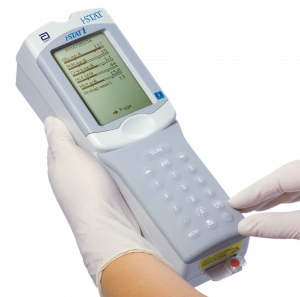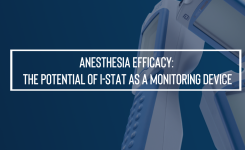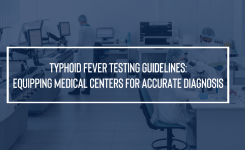Blog
Point-of-Care Testing: Rethinking the Possibilities of Healthcare
What Makes POCT Critical
Test results are the fundamental basis of every medical practitioner’s decision. Treating physicians must accurately understand and acknowledge all relevant symptoms or complication to implement an informed treatment. For emergency cases, the timely gathering and translation of these information becomes even more critical. The traditional laboratory setting with its complex steps and stages is simply not enough. Point-of-care testing may be the answer.
Point-of-care testing directly addresses these hurdles. With POCT devices, health practitioners can now perform essential tests by the patient’s side. This streamlines the diagnostic process, making it possible for important decision-making to be performed in mere minutes rather than hours.
A Multi-faceted Approach
It’s been thirty years since the Clinical Laboratory Improvement Amendments of 1988 caused the milestone boom in point-of-care testing development in the US. Since then, POCT devices have taken various forms with diverse purposes. Portability can now mean either transportability or the handheld structure of the instrument. Some devices test certain analytes while others, such as the i-STAT analyzer, can carry out an array of tests. Its variants can range from simple dipsticks and immunostrips to the advanced cartridge devices. Point-of-care is rapidly progressing so that the possibility of performing any tests anytime anywhere is becoming more and more of a reality. 
A Glimpse of What's to Come
POCT, by its nature, has always aspired to decentralize the laboratory. In a modern culture of accessibility, self-reliance, and promptness, on-the-spot diagnostics and monitoring is well on its way to becoming the norm. Hospital departments worldwide – particularly ERs – have begun to embrace and transition to point-of-care testing because of the numerous benefits it offers to their workflow and management.
1. Better Time Management
The turnaround time is widely considered as the key advantage in using POCT devices. The comparative speed in results processing and interpretation responds to a lot of the obstacles in the laboratory process. As mentioned before, samples not immediately tested can lose its accuracy in portraying the patient’s current status. Critical rapid decision-making needs all there is to know about the patient’s condition within the shortest time possible. Swift results delivery allows the physician to immediately perform the appropriate treatment, avoiding delays that could affect the patient’s status. The turnaround time and fast treatment response has also proven to affect the patient’s length of stay positively.
2. Significant Convenience
The tedious task of transporting samples from hectic areas such as operating and emergency rooms to the laboratory substantially obstructs the workflow. This impractical stage is scrapped altogether through the use of POCT devices. Their decidedly easy-to-use mechanisms also allow for professionals outside the laboratory to utilize the instruments, maximizing the abilities of all health practitioners involved. Users will also find that majority of POCT devices require minimum maintenance, mostly due to their use of disposable readily replaceable strips and test cartridges.
3. Improved Quality of Sample Data
Sample management is crucial in diagnostics. Every subsequent medical decision hinges heavily on the results yielded from the samples. As aforementioned, time has a lot to do with the sample’s quality. POCT’s rapid processing keeps common pre-analytic and post-analytic errors from occurring, particularly when blood gases, pH, and glucose are tested. With the progressively growing test menus for POCT, medical professionals would also find that a small amount of sample can present numerous necessary data. This is particularly important for cases where blood samples must be kept at a minimum, such as for neonatal care. For most POCT instruments, their expansive data management systems are capable of keeping all these valuable information in a readily understood and retrievable format.
With this amount of advances now within our reach, it’s no wonder that further steps are being taken to explore just how far POCT could take modern healthcare systems. As predicted by healthcare experts, the next stage would most likely be domestic health assessment devices and wearable monitoring diagnostics. The trend of self-agency would provide individuals with a better grasp of their health status as well as deliver accurate and updated reports to medical professionals. At the rate of these recent progresses, POCT is on its way to leading the world’s medical industry into its vision of collaborative, convenient, and personalized healthcare.








